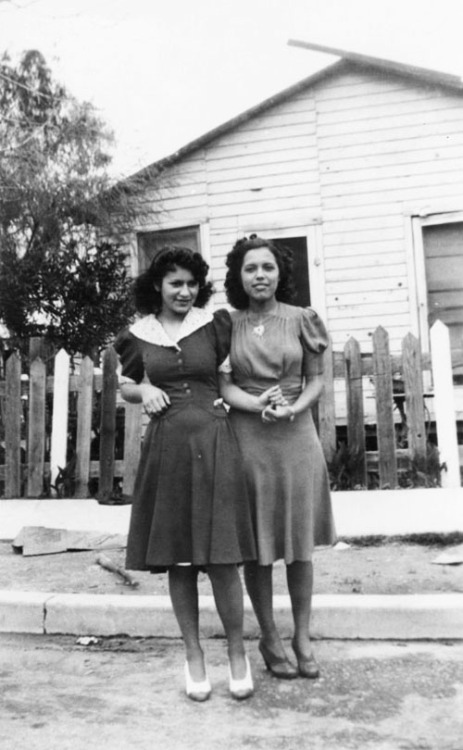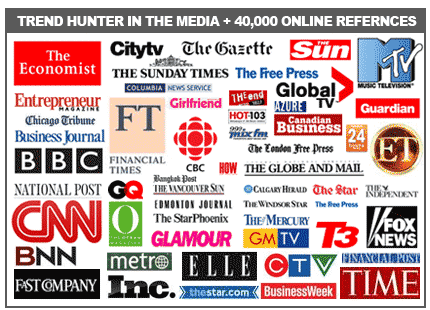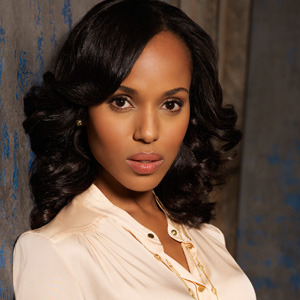Stereotypes of Black Women in the Media
Black Women v. The Media
The media is a huge driving force in society meant to connect and inform people. The purpose of the media is to present depictions and expressions of reality, in order to educate, entertain, and enculture its viewers. The rise of technology, such as television and the Internet, has made this phenomenon more widespread. People are constantly being bombarded with various images and messages that they are left to decipher and categorize. However, since bias and negativity is a pervasive part of the media, these images bring rise to hateful stereotypes and prejudice ways of thinking. Stereotypes are oversimplified ideas of a person that effectively blind one from seeing the true essence of an individual. These categorizations only dehumanize certain cultural groups and bring a corrupt sense of superiority to the dominant culture.
 Historically, the presence of black
women, especially those whom are strong and successful, is severely absent from
the media eye. The television, movie, and music industries have greatly
distorted the reality of black women. The portrayals of black females are
either outlandish to the point of being satirical or totally diminishing and
dehumanizing. Society uses stereotypes to devalue the worth of black women as
competent members of society. However more disturbingly, black women themselves
see these harsh, destructive depictions and accept the lack of control they
have over their image. Black women learn they are a stigma or a joke and submit
to “adjustment without improvement.” (23) Essentially black women adjust
themselves to live under the parameters of white society by living up to the
stereotypes or embracing whiteness to avoid them.
Historically, the presence of black
women, especially those whom are strong and successful, is severely absent from
the media eye. The television, movie, and music industries have greatly
distorted the reality of black women. The portrayals of black females are
either outlandish to the point of being satirical or totally diminishing and
dehumanizing. Society uses stereotypes to devalue the worth of black women as
competent members of society. However more disturbingly, black women themselves
see these harsh, destructive depictions and accept the lack of control they
have over their image. Black women learn they are a stigma or a joke and submit
to “adjustment without improvement.” (23) Essentially black women adjust
themselves to live under the parameters of white society by living up to the
stereotypes or embracing whiteness to avoid them.
Morrison accurately portrays the
struggle that black females face when confronted with the negative ways society
defines them. The women in this novel, with the exception of the prostitutes,
have acquired a learned self-shame or self-hatred. Pecola yearns for blue eyes
and begins to lionize white people because she sees the privilege and advantage
they have. Likewise, Claudia tries to deconstruct and understand and the
reasons behind why white women are regarded as better and black women are
viewed as lesser. However, her quest for reasoning is largely inconclusive.
Most of the prejudice she sees against blacks is arbitrary but is only given
value because it has historically been accepted. In Melissa V. Harris-Perry’s book Sister Citizen she finds that of black women:
‘‘97 percent
acknowledge that they are aware of negative stereotypes of African American
women and 80 percent confirm that they have been personally affected by these
persistent racist and sexist assumptions.’
Thus, black women are victims of continuous judgment. Their
lives become defined by what others think and expect of them. Starting in
childhood black women realize that their identity is not based off
individuality but a collective, pre-determined identity. This feeling is fully
captured by Morrison’s narration about the Breedloves’: “It was as though some
mysterious all knowing master had given each one a cloak of ugliness to wear,
and they had each accepted it without question.” (39) The “master” or
controlling force at hand is society, and the Breedloves’ internalize their
feelings of “ugliness” without bothering to break free from stereotypes.
Historical Stereotypes
Mammy
Mammy is a stereotype closely associated with the role of black women during slavery. Mammies were often considered large, dark-skinned women whom were distinctly asexual due to their spirituality. Mammies denote the undesirability of black women, but highlight their abilities as caregivers. The closest depictions of the mammy stereotype in The Bluest Eye are Mrs. Macteer and Mrs. Breedlove. Mrs. Macteer sings songs about lost love and is characterized by her harsh, tough love attitude towards her children. Instead of talking to Claudia when she is sick, “she [talks] to the puke, but she is calling it [her] name.” (11) Historically, there have been notions and misconceptions that black women are not as competent in caring for their children as much as white women are. Although Mrs. Macteer isn’t overly affection, she proves that she loves her children by taking care of them. In contrast, Mrs. Breedlove lacks a certain affection towards her own children and puts all her energy into servitude for white households. Mrs. Breedlove blames “her general feelings of separateness and unworthiness” on her deformed foot. (111) Mrs. Breedlove automatically categorizes herself in an undesirable position and concludes that she has nothing left in life to do besides be subservient.
The Help is a movie in the south based off real events in the 1960s. The black
maids in the movie are expected to meticulously care for the house and respond
to every demand of their bosses. The character Aibleen in The Help is a good example of the Mammy stereotype. Her own
personal desires become stagnant and are replaced by a meaningless life of
routine and submission.
Jezebel
Jezebels are caricaturized as
sexually promiscuous and oversexed black women. Usually these women were mostly
mixed or light-skinned, but the stereotype has branched out significantly. Some
of the explanation behind why black women might be over-sexualized or
considered “loose” can be related back to slavery. White masters used to rape
their black slaves; however, they often made black women take the blame as the
aggressors. In the context of Morrison’s novel, the prostitutes are slightly
reminiscent of the Jezebel stereotype. Although the prostitutes are the
characters most liberated from the judgment of others, they still represent the
over-sexualized stigma of black women. Many people in the community refer to
these women as “ruined”. Basically, “they were whores in whores’ clothing,
whores who had never been young and had no word for innocence.” (57) Many lack
respect for the prostitutes because of their sexual indulgences.
In Dr. Dre’s song Housewife, the lyrics exemplify
misogynistic stereotypes of women, in particular, black women or women of lower
social classes. It is abundantly clear that women that are even stigmatized as
sexually promiscuous are considered inadequate partners and mothers. The
portrayal of these types of black women in the media makes it harder for black
women to create a more positive image for themselves.
Sapphire
 Sapphire is a stereotype that
illustrates the perceived angry, cruel, and “sassy” side of black women. This
stereotype is more associated with black women berating their husbands but to a
larger extent represents the abusive nature of black females. The “darkly,
brutal formalism” of Cholly and Pauline’s explosive relationship greatly
portrays this concept. (43)
Pauline “[fights] in a purely feminine way—with frying pans and pokers, and
occasionally a flat iron.” (43) The sapphire stereotype only exhibits that
society and the media assume that black women have uncontrollable attitudes and
violent tendencies.
Sapphire is a stereotype that
illustrates the perceived angry, cruel, and “sassy” side of black women. This
stereotype is more associated with black women berating their husbands but to a
larger extent represents the abusive nature of black females. The “darkly,
brutal formalism” of Cholly and Pauline’s explosive relationship greatly
portrays this concept. (43)
Pauline “[fights] in a purely feminine way—with frying pans and pokers, and
occasionally a flat iron.” (43) The sapphire stereotype only exhibits that
society and the media assume that black women have uncontrollable attitudes and
violent tendencies.
In this scene from the movie Precious, Precious’ mother is portrayed
as being somewhat of a “sapphire” as she callously berates Precious. Similarly
enough, the experiences and situations of Precious in the movie and Pecola in The Bluest Eye have many parallels. They both come from
dysfunctional, poor black families and seem to be the scapegoat to the abuse
and fighting going on around them.
Modern Stereotypes
Angry Black Woman
The modern stereotype of the “angry
black women” is based off the sapphire stereotype. Black women are seen as
irrationally angry, which speaks poorly to their intelligence. The mere
feelings of black women label them as unattractive and undesirable. White
society at large is quick to disregard and trivialize the feelings of black
women. TV shows and movie just show that black women are unjustifiably angry
but don’t recognize that anger might be a way to reconcile their state of
oppression. Morrison attests to this fact in her writing after Pecola walks out
of Mr. Yacobowski’s
store. Pecola finds a “sense of being in anger.” (50) Pecola being an
impressionable child takes even her brief reaction with Mr.Yacobowski
personally, and feels inferior. She feels a lack of control over the way others
see her, and the only way for her to express herself at this moment is through
anger.
Scary
Movie is a parody movie that satirizes all facets of human behavior. In
this particular clip though, a loud, rude, angry black woman is disturbing
other moviegoers with her antics. This is an example of negative type casting
of black women. Although this is meant to be a comical scene, little jokes like
these are the basis of racism and continue to degrade the positive identity of
black females.
Independent Black
Woman
A more recent interpretation of
black women in the media is the “independent black women”. These black women
are characterized as successful overachievers, yet cold and sexually repressed
due to the fact that their success often overshadows and emasculates men.
Independence and success are very positive things but the media dictates that
black women cannot reach the top of their social hierarchy without losing touch
with themselves and severing relationships with those around them. In The Bluest Eye, Geraldine is the perfect
manifestation of what a woman should be based off of white standards, and she
regards herself as better than other black people. However, Geraldine is
disgusted by sex and doesn’t foster a true loving relationship with her son.
Geraldine is a “plain brown girl [that] will build her nest stick by stick,
make her own violable world, and stand guard over its every plan, weed, and
oil, even against [her husband].” (84) This evinces the stereotype of an
“independent black women” because Geraldine puts much of her energy into
bettering herself rather than connecting with her family.
In the ABC TV show Scandal, Olivia Pope is an affluent black
lawyer who is known for fixing crises in the White House. She is highly
successful but also seen as demanding and overbearing. As an independent black
woman, her personal life is sacrificed for seemingly greater achievements.
Olivia is highly respected but lacks true love and happiness in her life. Another thing to note is that the
actress portraying Olivia, Kerry Washington, is a lighter skinned black woman.
When black women do get notable roles in TV shows, the roles are given to black
women with more “Caucasian-friendly” features that represent white beauty.
Is Michelle Obama the Catalyst for Change?
Black women are burdened with the reality that society views them as women of a less caliber. Most media representations mark black women as less educated, less moral, and less hardworking than their white peers. Consequently, black women feel more inclined to separate themselves from these notions in whatever ways possible. In the context of The Bluest Eye, Morrison demonstrates how unwelcome black women feel in their environment and the only way they can find comfort in their being is to conform and assimilate.
However, the image of black women
in society could be shifting towards a more positive light. With Michelle Obama
as the first lady, the media has praised her accomplishments and highlighted
her poise and gracefulness. Michelle Obama has a distinguished professional
career and has established herself as a loving mother and wife. With portrayals
such as these, the distorted image of the black identity could eventually be
rectified.






No comments:
Post a Comment